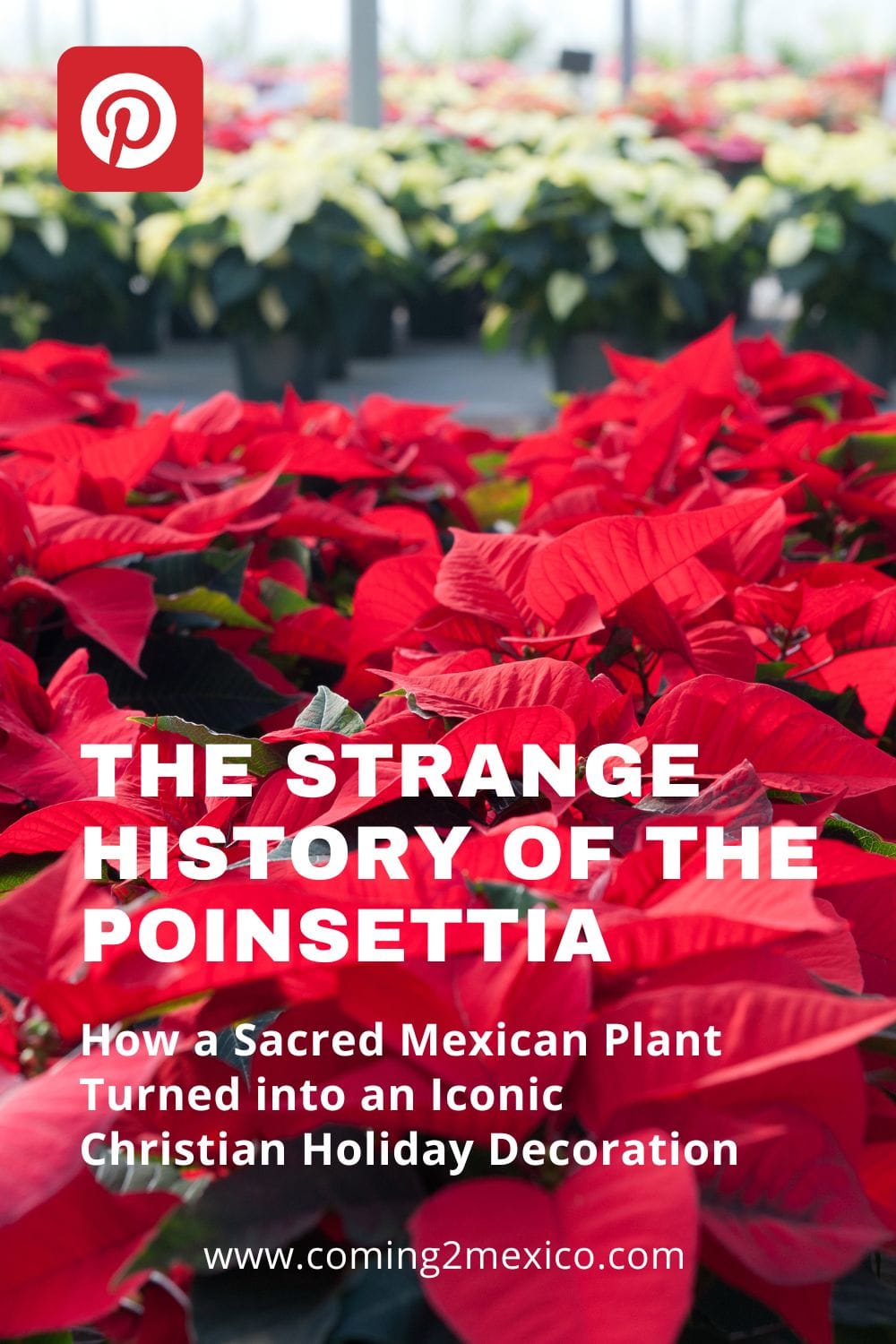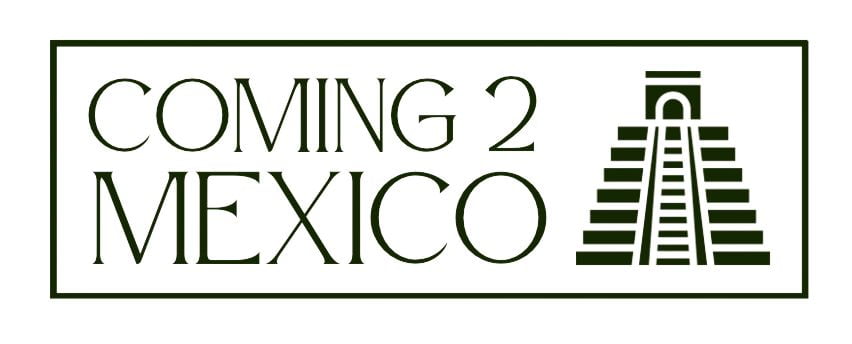Contents
How a Sacred Mexican Plant Turned into an Iconic Christian Holiday Icon
As the holiday season rapidly approaches, homes and public spaces worldwide are adorned with the vibrant red and green hues of the Poinsettia. Known scientifically as Euphorbia pulcherrima, this plant has become synonymous with Christmas festivities. However, the history of the Poinsettia and its cultural significance actually trace back to the Indigenous peoples of Mexico, where it was revered as the Cuetlaxochitl.

Indigenous Significance of the Cuetlaxochitl
Cuetlaxochitl (pronounced Kwe-tla-SO-cheetl) translates to “flower that withers” or “withering flower”. For the Mexicas, the Cuetlaxochitl symbolized purity and the new life obtained by warriors killed in battle.
It was believed that they returned to earth to drink the honey from this plant, which is why it was placed on altars dedicated to warriors who died in the line of duty.
Nezahualcóyotl, poet, philospher and ruler of the pre-Columbian city-state of Tetzcoco, founded the first botanical garden on record, where he gathered a splendid collection and ordered the plants and flowers that he could not obtain to be illustrated so that there would be a historic record of them.
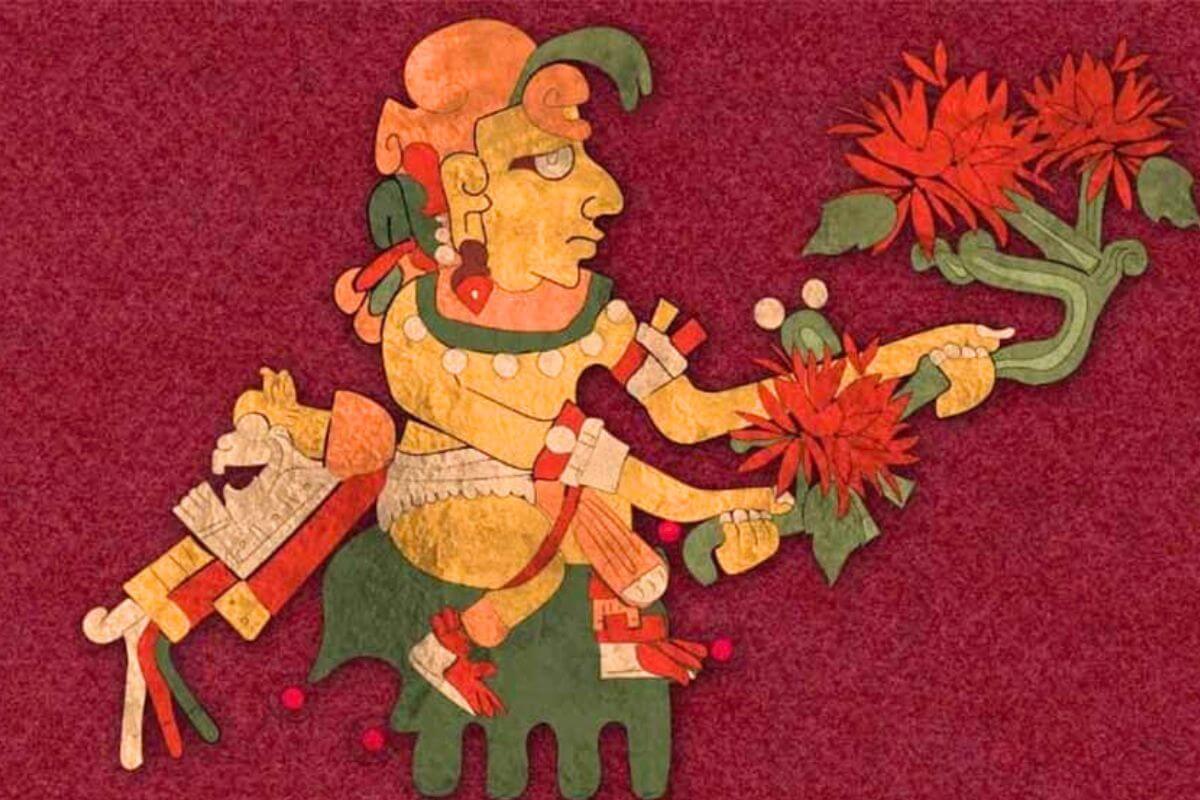
Native to the tropical regions of southern Mexico and Guatemala, the Cuetlaxochitl was deeply integrated into the lives of the Nahua people, including the Aztecs. The plant’s vibrant red bracts, often mistaken for petals, were associated with purity and used in various rituals and ceremonies. Notably, during the winter solstice, the Aztecs celebrated the birth of Huitzilopochtli, the god of war and the sun, with offerings of Cuetlaxochitl, symbolizing new life and renewal.
Beyond its ceremonial use, the Cuetlaxochitl had practical applications. The plant’s sap was used to treat fevers, while its bracts were employed to create red and purple dyes for textiles. Additionally, infusions made from the plant were believed to stimulate lactation in nursing mothers, highlighting its role in traditional medicine.
Colonial Impact and Transformation
The arrival of Spanish colonizers in the 16th century brought profound changes to the Indigenous cultures of Mexico. Spanish missionaries, seeking to convert the native population to Christianity, repurposed local symbols and traditions to align with Christian narratives.
The Cuetlaxochitl, blooming during December, was adopted into Christian ceremonies, eventually becoming associated with Christmas. It was referred to as “Flor de Nochebuena,” or “Flower of the Holy Night,” symbolizing the Star of Bethlehem.
All across Mexico, in markets and nurseries, Nochebuena is the commonly accepted name for what was once known as Cuetlaxochitl. If you are celebrating Christmas in Mexico, your holiday decor will not be complete without the colorful Nochebuena plant.
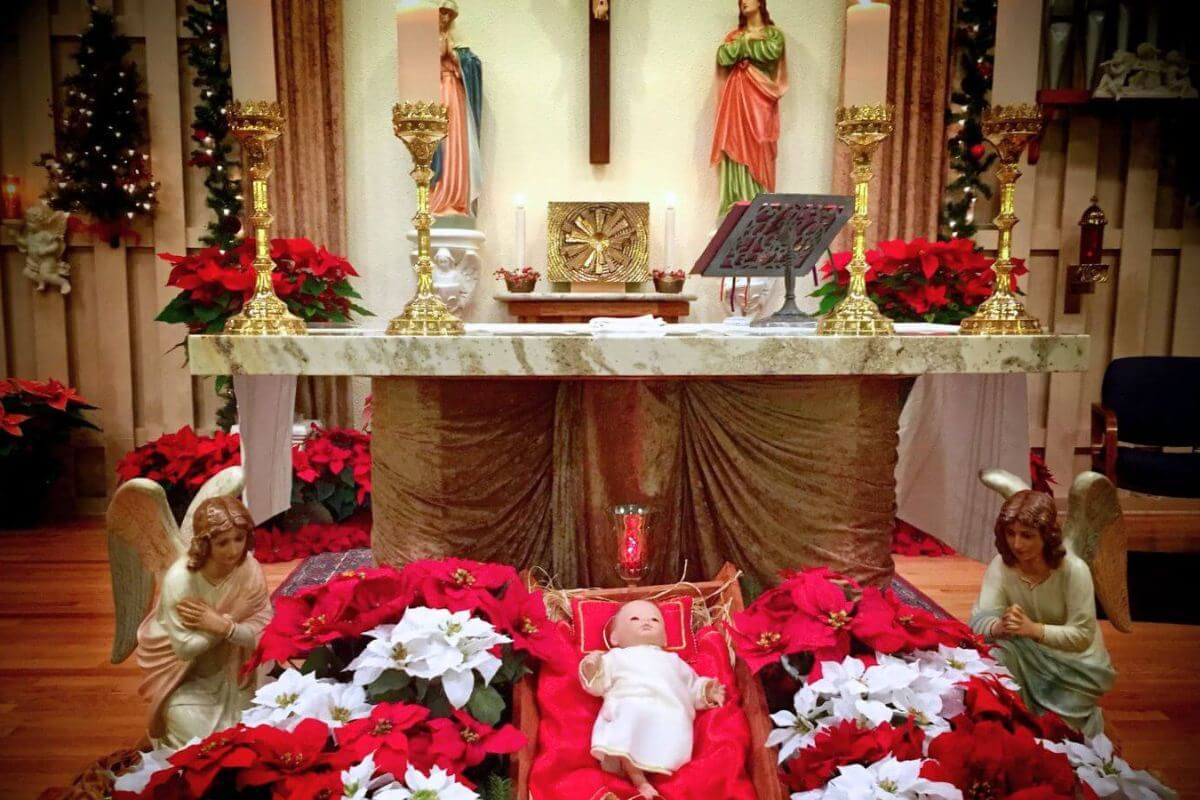
The History of the Poinsettia in the United States
In 1828, Joel Roberts Poinsett, the first U.S. Minister to Mexico and an amateur botanist, encountered the Cuetlaxochitl during his travels in the country. Captivated by its beauty, he sent cuttings back to his greenhouse in South Carolina. Poinsett propagated the plant and distributed it among horticulturalists and botanical gardens. Over time, the plant became known as the “poinsettia,” in his honor.
While Poinsett’s introduction of the plant to the United States popularized its cultivation, his legacy is marred by his political actions. Poinsett was a staunch proponent of slavery and played a significant role in the displacement of Indigenous populations, notably influencing policies that led to the Trail of Tears in the mid nineteenth century. His actions contributed to the erasure of Indigenous cultures and histories, effectly closing the book on the origin story of of the Cuetlaxochitl.

Widespread commercialization of the Poinsettia in the United States can be largely attributed to the efforts of Paul Ecke Sr. in the early 20th century. Ecke developed techniques to cultivate the plant indoors and began selling them at roadside stands in Hollywood, California. In 1923, he founded the Ecke Ranch, which became a leading producer of poinsettias, supplying a significant portion of the U.S. market.
Today, Poinsettias are a staple of Christmas decor worldwide, with over 100 varieties available in shades of red, pink, white, and even marbled patterns. This once sacred plant is now ubiquitous to the Christian holiday celebrations. Their association with the holiday season has far overshadowed their rich Indigenous heritage and they are just as popular here in Mexico during the Christmas season as they are in the United States.
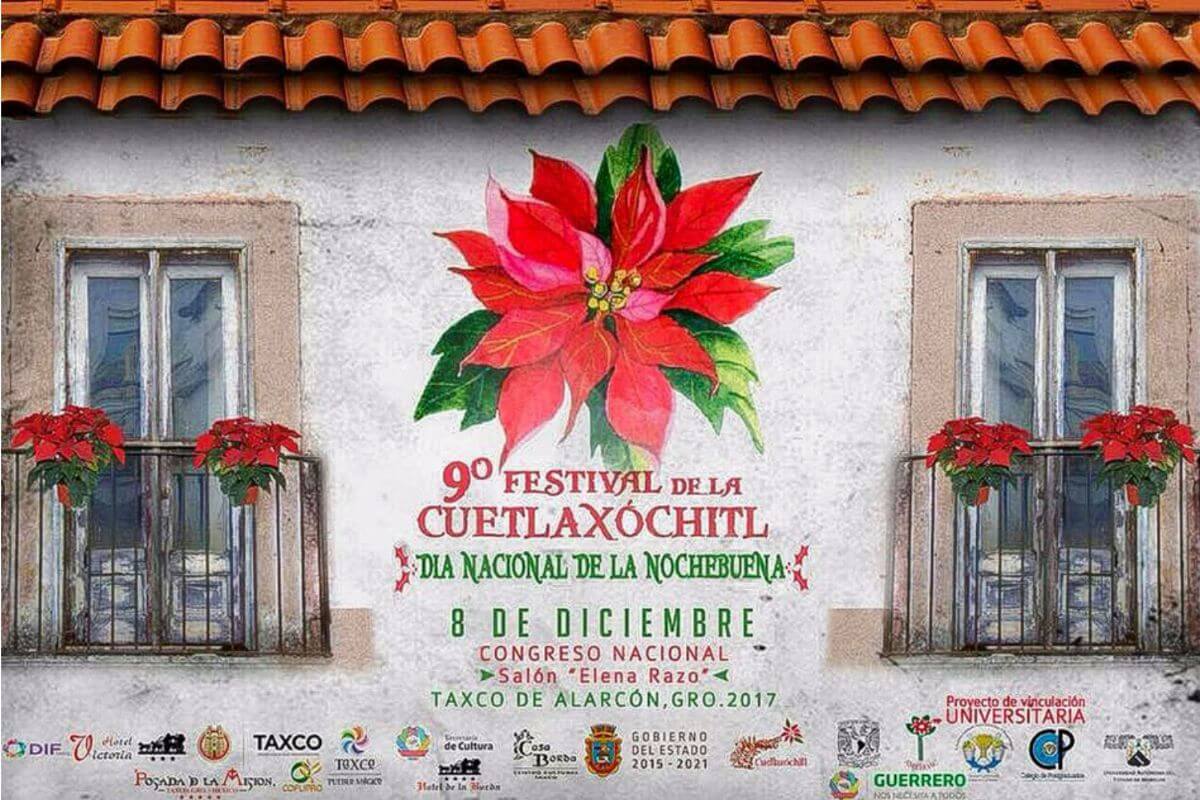
Reinserting Cuetlaxochitl into the History of the Poinsettia
In recent years, there has been a movement in Mexico to acknowledge and honor the Indigenous roots of the Cuetlaxochitl. Advocates encourage the use of its original Nahuatl name and seek to educate the public about its cultural significance prior to colonial influence. By doing so, they hope to restore the plant’s identity and pay homage to the traditions of the Indigenous peoples of Mexico.
The evolution of the Cuetlaxochitl from a sacred Indigenous symbol to a global emblem of Christmas reflects deeper themes of cultural transformation and appropriation. The Poinsettia plant is here to stay but, as we decorate our porches, hearths and churches this holiday season, let us also honor the Cuetlaxochitl and the lost Indigenous heritage it represents.
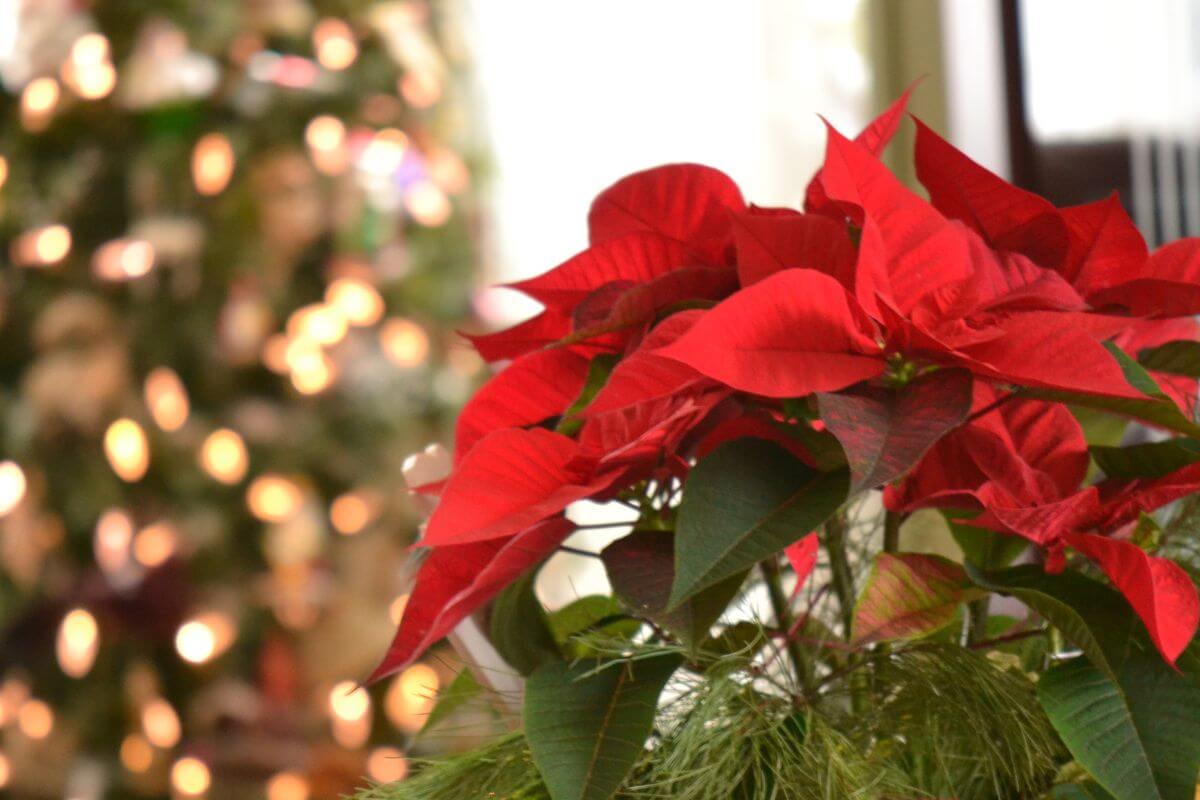
10 Interesting Facts About Poinsettia Plants
- The “Flowers” Are Actually Leaves: The vibrant red, pink, or white “flowers” of the poinsettia are not flowers at all. They are specialized leaves called bracts. The actual flowers are the tiny yellow clusters found at the center of the bracts.
- Not Actually Toxic to Pets: Contrary to popular belief, poinsettias are not highly toxic to pets. While they can cause mild stomach upset if ingested, they are generally considered only mildly irritating to cats and dogs and are not fatal.
- Named After Joel Poinsett in 1836: The poinsettia was officially named after Joel Roberts Poinsett, the U.S. Minister to Mexico, by the German botanist Carl Ludwig Willdenow in 1836.
- Poinsettia Day is December 12: The United States celebrates National Poinsettia Day on December 12, commemorating the death of Joel Poinsett in 1851 and the plant’s cultural significance.
- Over 100 Cultivars Exist: There are now over 100 varieties of poinsettias, ranging from traditional red to shades of pink, white, yellow, and even speckled or marbled patterns.
- Symbol of Goodwill in Mexico: In Mexican culture, the Cuetlaxochitl (poinsettia) is not only a symbol of Christmas but also a representation of goodwill and purity, rooted in its pre-Columbian significance.
- They’re Not Winter-Blooming: Poinsettias are actually tropical plants that bloom naturally in winter because of the short daylight hours. Growers manipulate light exposure to ensure they “bloom” (turn red) in time for Christmas.
- Paul Ecke’s Secret: For decades, Paul Ecke Sr. dominated the poinsettia market by developing a grafting technique that produced fuller, more attractive plants. His secret formula was a family trade secret until it was discovered in the 1990s.
- Sensitive to Light and Temperature: Poinsettias require strict light and temperature conditions to maintain their color. Exposing them to even small amounts of artificial light at night can disrupt their color-changing process.
- Second Only to Orchids in Value: In the U.S., poinsettias are the second most valuable potted plant crop, following orchids. They generate over $250 million in sales annually, making them a holiday-season staple.
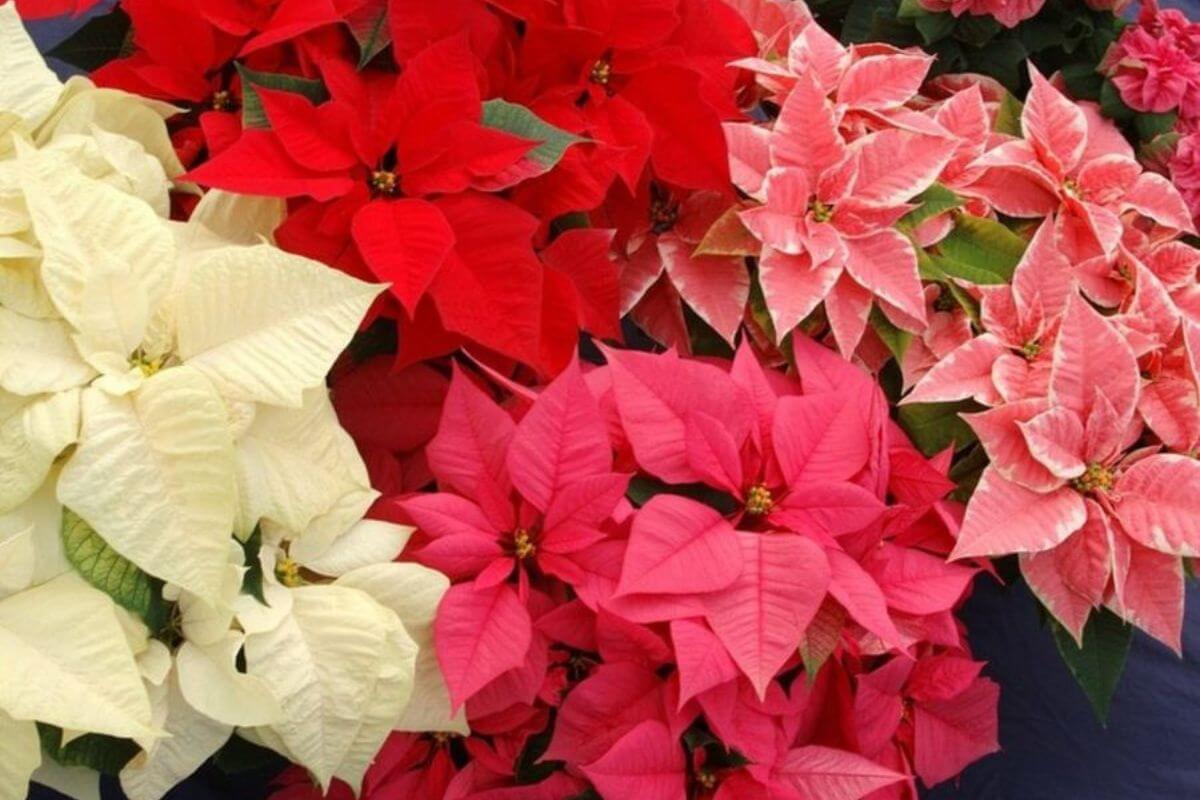
If you enjoyed this article, you may also enjoy:
Feliz Navidad! Celebrating Christmas in Mexico
Virgin de Guadalupe Day in Mexico: A Celebration of Faith and Culture
What is Día de Candelaria and How if it Celebrated in Mexico?
